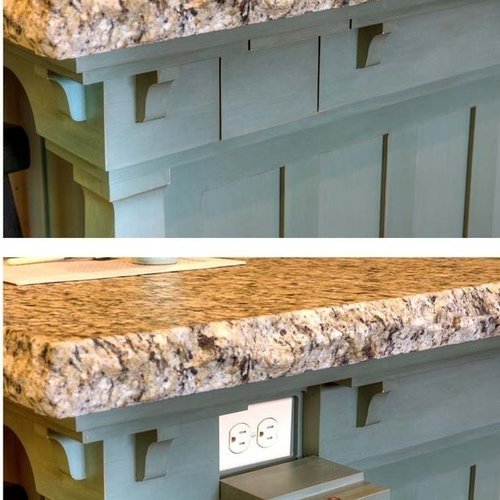Adding Electrical Outlets To A Home
Hide outlets when possible, so they don't detract from the beauty of the room.
Every room in the home has to have several electrical outlets installed. The Arizona’s housing standard electrical code is to have an outlet at least every twelve feet along the wall so that there is an outlet which is six feet from any point on the wall and about eighteen inches from the floor. But these are just minimums and recommendations; there are definite advantages to having more than the minimum acceptable number.
First off, the appliance and lighting function is going to be so much better. The more outlets a home has, the more places there are to put appliances and lighting. An adequate number out outlets give a home more versatility and style options when the furniture is in place. Adequate outlets increase the value of the home down the line, as well.
Adding outlets isn’t the place to skimp out on the budget. During a renovation, adding a few more outlets won’t cost more than buying all of those extension cords down the line. An extension cord is such a poor substitute for an outlet. They’re not especially safe, they’re more likely to short out than electrical circuits, and they qualify as a trip hazard.
This is an old trick, but a good one.
Extra outlets should comply with building and electrical codes so they’ll be safe and pass inspection. A certified electrician is well-versed in these codes, so the work should pass inspection without incident, especially if the electrician stands behind their work the way some of us do. Outlet installation should occur before the drywall goes in, so the work can be inspected and approved before the project moves forward.
Kitchen outlets represent a particular challenge because kitchen appliances, behind entertainment appliances, represent the lion’s share of outlet usage. And, let’s face it, outlets on that expensive tile or marble backsplash are very distracting. Sometimes it’s better to hide them, if possible, so the kitchen can really have the power it requires and still look elegant and inviting.
The only ones who know these are here are the owners and kids.
The only ones who know these are here are the owners and kids.
Also, kitchen, bathroom, basement, and crawl spaces are required to have GFCI outlets. These outlets provide a safety measure against the possibility of shock if the appliance (or the person using it) comes in contact with water and there is a change in the current flow. GFCI’s have saved thousands of people from electrical shocks since their introduction into the electrical code.
During the process of adding outlets, ask your electrician to change all of your two-prong outlets to three-prong outlets. Three-prong outlets are a much safer option, and we’ve never heard anyone wish their electrical wiring was ‘less safe.'
Once your home has a bountiful supply of electrical outlets, you’ll wonder how you ever got by before they without them.



